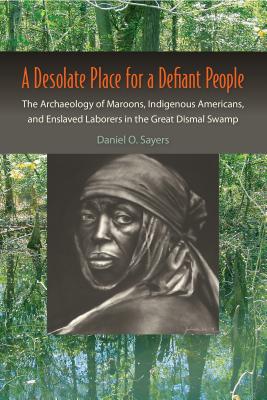A Desolate Place for a Defiant People: The Archaeology of Maroons, Indigenous Americans, and Enslaved Laborers in the Great Dismal Swamp

A Desolate Place for a Defiant People: The Archaeology of Maroons, Indigenous Americans, and Enslaved Laborers in the Great Dismal Swamp
"Shows how colonialism and slavery created sustained critiques of American capitalism and created the conditions for chronic resistance. These communities represent a largely unrecognized, alternative declaration of independence. They are a part of world history that is truly revolutionary."--Mark P. Leone, author of The Archaeology of Liberty in an American Capital "Addresses key historical and theoretical debates of the archaeology of the African diaspora. Theoretically complex and methodologically rigorous, it is the first serious study to locate maroon groups in the Chesapeake."--Frederick H. Smith, author of The Archaeology of Alcohol and Drinking "Sayers uses archaeology to tell a compelling story of how alienated people found refuge in the alien landscape of the Great Dismal Swamp. Here they created their own way of life, free of the exploitation and alienation that they escaped. His work helps us to better understand the history of defiance in the Antebellum South and raises important theoretical issues for all archaeologists studying diasporic communities."--Randall H. McGuire, author of Archaeology as Political Action In the 250 years before the Civil War, the Great Dismal Swamp of Virginia and North Carolina was a brutal landscape--2,000 square miles of undeveloped and unforgiving wetlands, peat bogs, impenetrable foliage, and dangerous creatures. It was also a protective refuge for marginalized individuals, including Native Americans, African-American maroons, free African Americans, and outcast Europeans. In the first thorough archaeological examination of this unique region, Daniel Sayers exposes and unravels the complex social and economic systems developed by these defiant communities that thrived on the periphery. He develops an analytical framework based on the complex interplay between alienation, diasporic exile, uneven geographical development, and modes of production to argue that colonialism and slavery inevitably created sustained critiques of American capitalism.
PRP: 232.04 Lei
Acesta este Prețul Recomandat de Producător. Prețul de vânzare al produsului este afișat mai jos.
208.84Lei
208.84Lei
232.04 LeiLivrare in 2-4 saptamani
Descrierea produsului
"Shows how colonialism and slavery created sustained critiques of American capitalism and created the conditions for chronic resistance. These communities represent a largely unrecognized, alternative declaration of independence. They are a part of world history that is truly revolutionary."--Mark P. Leone, author of The Archaeology of Liberty in an American Capital "Addresses key historical and theoretical debates of the archaeology of the African diaspora. Theoretically complex and methodologically rigorous, it is the first serious study to locate maroon groups in the Chesapeake."--Frederick H. Smith, author of The Archaeology of Alcohol and Drinking "Sayers uses archaeology to tell a compelling story of how alienated people found refuge in the alien landscape of the Great Dismal Swamp. Here they created their own way of life, free of the exploitation and alienation that they escaped. His work helps us to better understand the history of defiance in the Antebellum South and raises important theoretical issues for all archaeologists studying diasporic communities."--Randall H. McGuire, author of Archaeology as Political Action In the 250 years before the Civil War, the Great Dismal Swamp of Virginia and North Carolina was a brutal landscape--2,000 square miles of undeveloped and unforgiving wetlands, peat bogs, impenetrable foliage, and dangerous creatures. It was also a protective refuge for marginalized individuals, including Native Americans, African-American maroons, free African Americans, and outcast Europeans. In the first thorough archaeological examination of this unique region, Daniel Sayers exposes and unravels the complex social and economic systems developed by these defiant communities that thrived on the periphery. He develops an analytical framework based on the complex interplay between alienation, diasporic exile, uneven geographical development, and modes of production to argue that colonialism and slavery inevitably created sustained critiques of American capitalism.
Detaliile produsului










